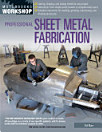Wettability at High Temperatures
N. Eustathopoulos · M.G. Nicholas · B. Drevet
ພ.ຈ. 1999 · Pergamon Materials Series ຫົວທີ 3 · Elsevier
ປຶ້ມອີບຸກ
419
ໜ້າ
family_home
ມີສິດ
info
reportບໍ່ໄດ້ຢັ້ງຢືນການຈັດອັນດັບ ແລະ ຄຳຕິຊົມ ສຶກສາເພີ່ມເຕີມ
ກ່ຽວກັບປຶ້ມ e-book ນີ້
The purpose of this book is to bring together current scientific understanding of wetting behaviour that has been gained from theoretical models and quantitative experimental observations. The materials considered are liquid metals or inorganic glasses in contact with solid metals or ceramics at temperatures of 200-2000oC. Wetting has been a significant scientific concern for the last two centuries and reference will be made to classical work by nineteenth century scientists such as Dupré, Laplace and Young that was validated by observations of the behaviour of chemically inert ambient temperature systems.In attempting to achieve the aims of the book, the text has been divided into ten Chapters that can be grouped into four stages of presentation. The first stage comprises two Chapters that review established and newly developed models for their relevance to wetting behaviour at high temperatures, including recent models that encompass the role of chemical reactions at the solid/liquid interfaces. Attention is paid both to equilibrium wetting behaviour (Chapter 1) and to the factors that control the approach to equilibrium (Chapter 2). Then follow Chapters concerned with experimental techniques for scientific measurement of the extent of wetting (Chapter 3) and with the surface energy data for both metals and non-metals that are essential for quantitative interpretation of wetting behaviour (Chapter 4). Descriptions of experimentally determined and quantified wetting behaviour are presented and interpreted in the third part comprising five Chapters dealing with the characteristics of metal/metal, metal/oxide, metal/non-oxide, metal/carbon and molten glass/solid systems. The book concludes with a Chapter commenting on the role of wetting behaviour in joining similar and dissimilar materials by liquid route techniques.
ໃຫ້ຄະແນນ e-book ນີ້
ບອກພວກເຮົາວ່າທ່ານຄິດແນວໃດ.
ອ່ານຂໍ້ມູນຂ່າວສານ
ສະມາດໂຟນ ແລະ ແທັບເລັດ
ຕິດຕັ້ງ ແອັບ Google Play Books ສຳລັບ Android ແລະ iPad/iPhone. ມັນຊິ້ງຂໍ້ມູນໂດຍອັດຕະໂນມັດກັບບັນຊີຂອງທ່ານ ແລະ ອະນຸຍາດໃຫ້ທ່ານອ່ານທາງອອນລາຍ ຫຼື ແບບອອບລາຍໄດ້ ບໍ່ວ່າທ່ານຈະຢູ່ໃສ.
ແລັບທັອບ ແລະ ຄອມພິວເຕີ
ທ່ານສາມາດຟັງປຶ້ມສຽງທີ່ຊື້ໃນ Google Play ໂດຍໃຊ້ໂປຣແກຣມທ່ອງເວັບຂອງຄອມພິວເຕີຂອງທ່ານໄດ້.
eReaders ແລະອຸປະກອນອື່ນໆ
ເພື່ອອ່ານໃນອຸປະກອນ e-ink ເຊັ່ນ: Kobo eReader, ທ່ານຈຳເປັນຕ້ອງດາວໂຫຼດໄຟລ໌ ແລະ ໂອນຍ້າຍມັນໄປໃສ່ອຸປະກອນຂອງທ່ານກ່ອນ. ປະຕິບັດຕາມຄຳແນະນຳລະອຽດຂອງ ສູນຊ່ວຍເຫຼືອ ເພື່ອໂອນຍ້າຍໄຟລ໌ໄໃສ່ eReader ທີ່ຮອງຮັບ.







